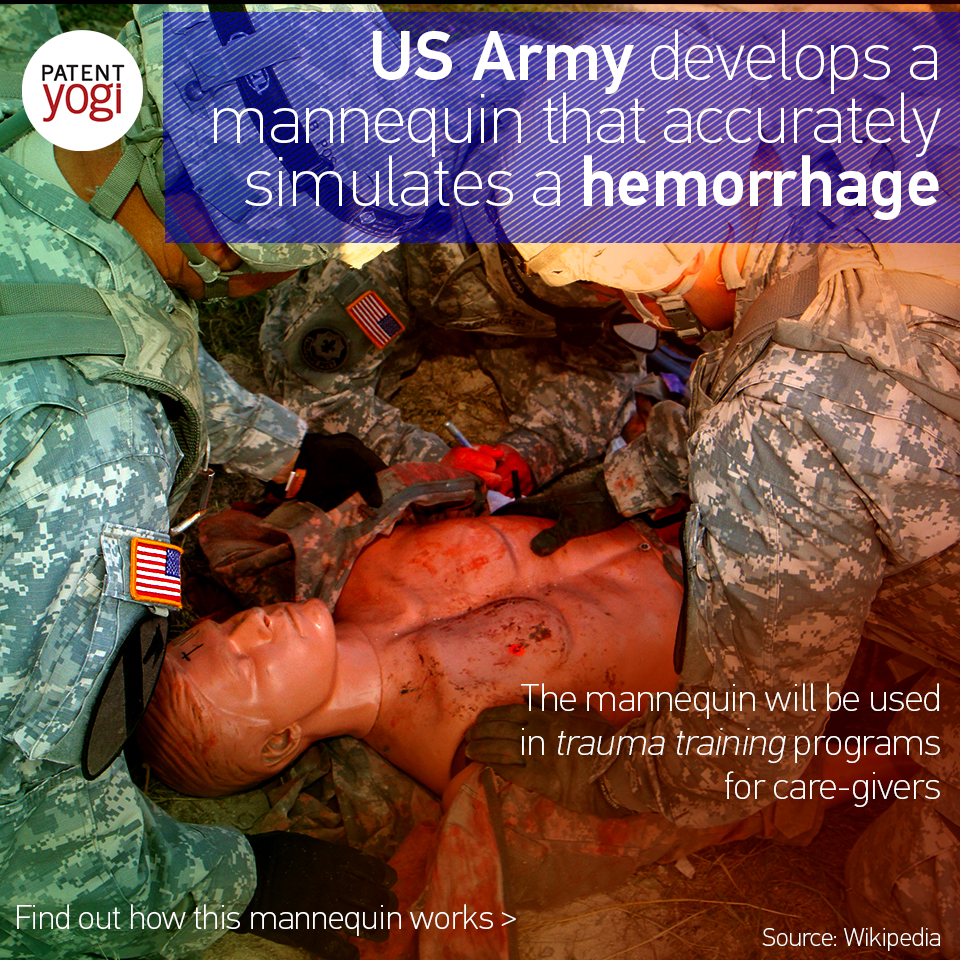Critical care givers, such as first responders, medics, and emergency medical technicians (EMTs) are trained to provide help in many emergency situations accident, natural disaster, terrorist attack or even wars.
Therefore, trauma training systems, such as mannequins, are used to train the critical care givers in a variety of medical situations such as CPR and other emergency room situations.

The trauma training systems simulate many health conditions and help the care givers get a “feel” of a real emergency situation.

Existing trauma training systems are not yet capable of dynamic and realistic bleeding simulation to replicate a live traumatic bleeding situation. Bleeding wounds such as hemorrhages are quite common during wars. You may recall the scene from Saving Private Ryan, when the soldiers land on the Normandy beach. Many soldiers were shown to be bleeding profusely when stuck by bullets.
US Army has now developed a trauma training system that accurately simulates a hemorrhage. The system includes a mannequin and a reservoir housed in the mannequin. One or more wound sites are disposed on the mannequin. A flow controller delivers fake blood from the reservoir to the wound site to simulate a hemorrhage. The flow controller delivers a pulsating flow to reflect blood being pumped by a “heart”. Multiple flow lines deliver the fake blood to multiple wound sites simultaneously.
The system also reacts (using audio) to the actions and choice made by the trainee such that more specialized and realistic training is possible.
Publication number: US 20160260357
Patent Title: Trauma Training System
Publication date: 8 Sep 2016
Filing date: 16 May 2016
Inventors: Lynn R. King;
Original Assignee: US Army Medical Research and Materiel Command

